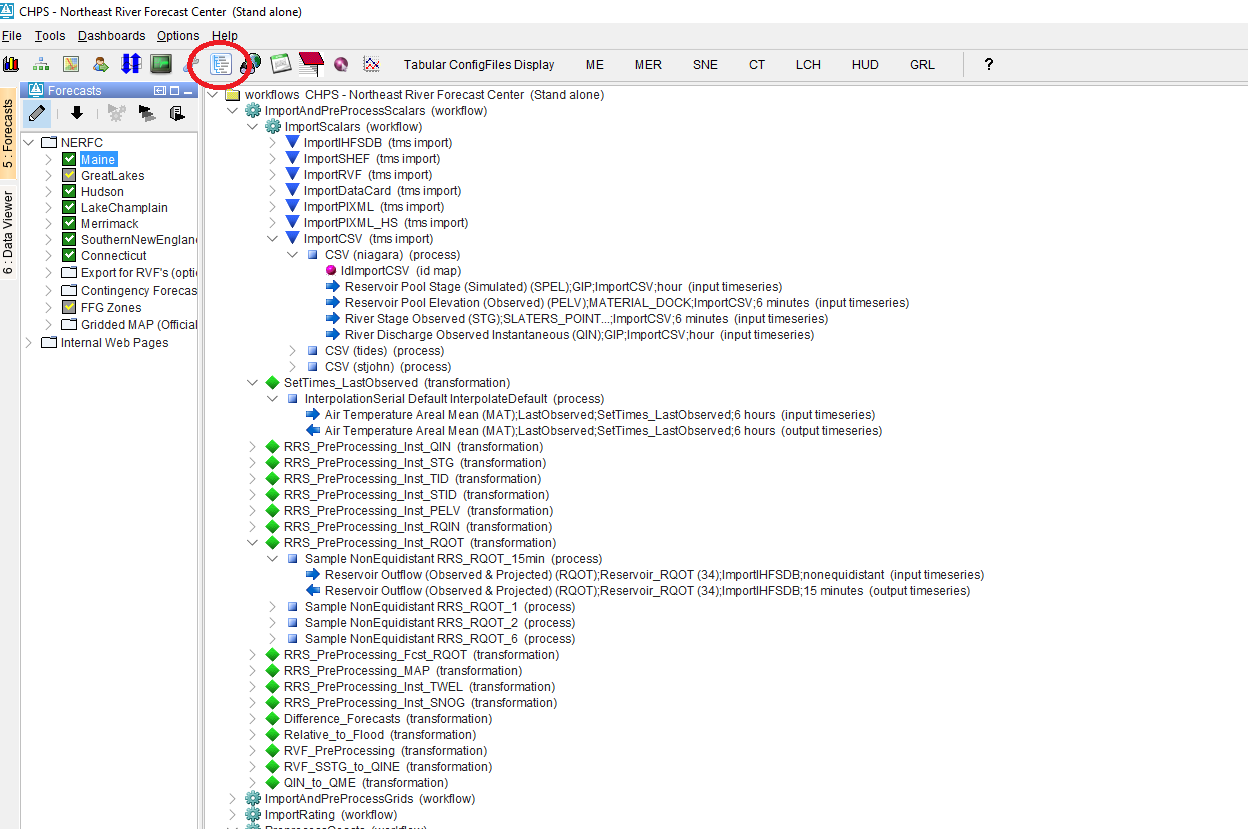Introduction
The Workflow Navigator (WN) is a helpful tool for understanding the hierarchical structure of your workflows and all underlying modules, module-instances and incoming/outgoing timeseries. It can also highlight the usage of specific timeseries throughout your config so that you can 'trace' where data is produced and (re)used. The WN displays workflows in a clickable tree-structure so you can navigate and drill down into a workflow towards timeseries level and even inspect the series in a graph or spatial plot.
Opening the Workflow Navigator
The Workflow Navigator (WN) can be started in two ways.
- From the Delft-FEWS Explorer - Map, use the <F12> menu + select option "K"
- From the Delft-FEWS Explorer Taskbar, when configured as an <explorerTask>
Ad 1. Starting WN from the <F12> menu
When you start the WN from the <F12> menu, all available (visible) workflows will be visualised in the tree-structure. The WN itself opens in a "Worflow Navigator" Tab and can be (un)docked like all other tabs.
Ad 2. Starting WN from the Taskbar
When you start the WN from the Explorer taskbar it will 'listen' to the selected workflow in e.g. your topology (forecast tree). Only that workflow will then be visible in the Workflow Navigator tab.
Logging
All relevant logging will appear in the Delft-FEWS Explorer log panel. From version 2018.02 (and higher) the log panel has been removed from the Workflow Navigator tab and is now centrally available in the Delft-FEWS Exporer log panel.
Usage of the Workflow Navigator
As mentioned in the introduction, the WN displays workflows as a clickable tree-structure. In this tree-structure different icons are used. The table below explains the different icons used.
| Icon | Description | Remark |
|---|---|---|
Context-menu options

